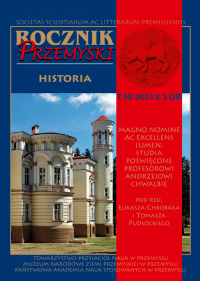Imiona w radzieckiej rzeczywistości. Nowe życie miało znaleźć odzwierciedlenie nawet w nowych imionach
Given names in Soviet reality. The new life was to find a reflection even in new names
Author(s): Stanisław StępieńSubject(s): Language studies, Language and Literature Studies, Applied Linguistics, Sociolinguistics, Eastern Slavic Languages
Published by: Wydawnictwo Uniwersytetu Jagiellońskiego
Keywords: name neologisms; atheization of society; Soviet names; League of Militant Atheists; USSR
Summary/Abstract: Even before the outbreak of the October Revolution in Russia, the most engaged in terms of outlook Bolsheviks expressed the need to reject bourgeoisie mentality and remove religion from social life. The attempt was made after the Bolshevik revolution of 1917. It was decided to apply “scientific methods” to religion, based on the evolution theory by Charles Darwin. On 7 February 1925 in the USSR the League of Atheists was set up, which name was in 1929 changed to the League of Militant Atheists; antireligious periodicals and a series of various brochures were published in millions of copies. One of the ways to fight religion was to eliminate Christian names from social life. Therefore, new Communist names were created, of antireligious meaning or praising the new political system and its economic successes, like: Industrin, Tractorin, Combine, Oktyabrin, and even Stalic, Stal, Stalin as well as their female counterparts: Stalina, Oktyabrina, Tractorina. Baptism was replaced with a secular ceremony called Oktyabriny (October-making) or zvyezdiny (star-making). The experiment did not stand the test of time and though some of the names created at the time have been preserved in their vestigial form, they are the main object of research by historians and linguists.
Journal: Rocznik Przemyski Historia
- Issue Year: 28/2022
- Issue No: 4
- Page Range: 173-198
- Page Count: 26
- Language: Polish

